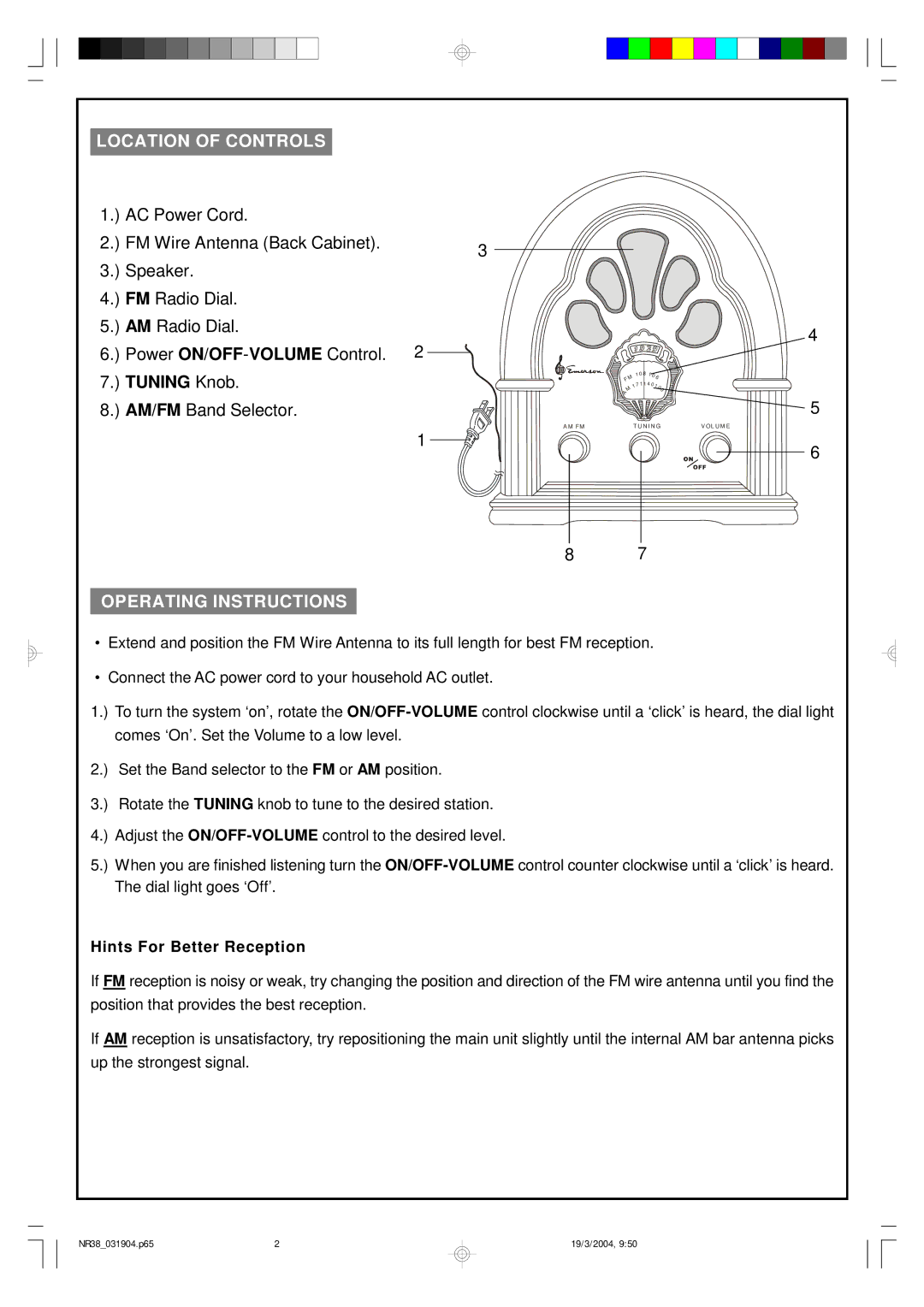NR38 specifications
The Emerson NR38 is a cutting-edge, high-performance network router designed specifically for industrial applications that require reliable connectivity in challenging environments. With its robust design and advanced features, the NR38 plays a vital role in ensuring seamless communication and data transmission across various operational settings, including manufacturing plants, energy facilities, and transportation systems.One of the main features of the Emerson NR38 is its rugged construction, which allows it to withstand extreme temperatures, vibrations, and dust, making it ideal for harsh industrial environments. The device is engineered to meet and exceed international standards for environmental durability, ensuring continuous operation even in less-than-ideal conditions.
The NR38 is built with advanced network technologies, including support for both wired and wireless communication protocols. It offers dual SIM capability, enabling automatic network failover to ensure uninterrupted connectivity. This is particularly important in scenarios where downtime can lead to significant financial losses. Additionally, it supports LTE and 5G connectivity options, providing high-speed internet access for remote monitoring and data acquisition.
Another standout characteristic of the Emerson NR38 is its comprehensive cybersecurity features. The router incorporates advanced security protocols, including VPN capabilities, secure firewall configurations, and intrusion detection systems. These measures help protect sensitive data and maintain the integrity of industrial control systems from potential cyber threats.
Moreover, the NR38 is equipped with built-in analytics tools, allowing users to monitor network performance in real-time. This feature enables proactive management of network resources and helps optimize operational efficiency. Users can access detailed reports and analytics through a user-friendly interface, making it easier to identify potential issues before they escalate.
The Emerson NR38 is not just focused on performance; it also emphasizes ease of integration and scalability. The device is compatible with various industrial protocols, making it simple to incorporate into existing systems. Its modular design allows for easy upgrades and expansions as organizational needs evolve, ensuring that the router remains a valuable asset over time.
In summary, the Emerson NR38 is a highly versatile and dependable network router, offering exceptional performance, robust security, and advanced analytics in a rugged design. Its combination of features and technologies makes it an ideal solution for industrial sectors aiming to enhance connectivity and operational efficiency while minimizing risks associated with network failures and security breaches.

